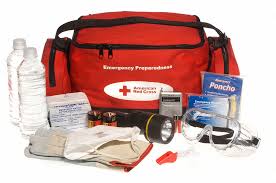How to Prepare for bad weather

As we start to get more settled into to the winter routine, we should try to get ready for whatever may come our way. According to NOAA the 2016-17 winter may bring colder-than-average temperatures to the East early on, but this winter may end up warmer than average. A weak La Niña www.publicaffairs.noaa.gov is expected to develop , which would result in colder temperature in the East and warmer temperatures in the West, which flips the pattern over the last several months. Although this is the outlook for our winter we should always prepare ourselves with a “Storm Kit”. Here are some tips on how to prepare your house or the house of one of your elderly loved ones.
- MAKE A LIST of all your emergency numbers and contacts. It’s always a good idea to write down all the local emergency numbers. Each state has a web site where you could find those numbers listed. For the state of New Hampshire you can visit the Divison of Emergency Services and Communication at www.nh.gov.
- GATHER CANDLES, MATCHES, AND FLASHLIGHTS in case the power goes off, you do not want to be sitting in the dark. It’s highly recommended to keep a set of these items in the “Storm Kit” and another set on a shelf or in a common area where it could be easily accessed. If you or a loved one is in a wheelchair or not able to reach high places, these items should be placed in an area where they could be reached.
- CHARGE YOUR CELL PHONE. If you do not have a landline make sure that you charge your cell phone to have access to the storm information or being able to make contact with other people such as, loved ones or emgency personnell. It is also a good idea to charge any electric power chairs or medical devices that you may need to use.
- HAVE AN AM/PM RADIO to stay in tuned with the storm coverage. It is best to have a batteried operated radio in case the electric goes out.
- STOCK UP ON BATTERIES for all the electronic devices or flashlights. Keep in mind that batteries do expire and you will need to check the expiration dates often.
- KEEP NON-PERISHABLE FOOD AND WATER on hand. It is reccommended to keep in stock one gallon of water per person per day and 3 days worth of non-perishable foods.If you have to take medications throughout the day you may want to plan for more water. Also if you pack canned foods, make sure that you have a can opener.
- HAVE AN EVACUATION AND MEET UP PLAN. Have maps and a safe location where you can go to incase the home is no longer safe. Share this location with another person, so they know where to look if needed. If you or a loved one is home bond it is a good idea to have a designated nieghbor or family member drop by to check in on you.
- MEDICATION LIST and medications in an easy accessed area. With having the list if you were to get seperated from your medications this with show what you are taking and a doctor could call in another script those medications.
- 1ST AIDE KITS should include all sizes of banages, burn aides, warmers, emergency blankets, and a dust mask to help with the dust if needed.
- EXTRA CLOTHING AND BLANKETS for staying dry and warm.
- PETS, if you have pets it is recommended to follow these same guide lines for them. Also include a list of all your pets immunizations and medications, if any. They will be scared and nervous so make sure you pack items that they are familiar with, such as a favorite toy.
The Federal www.Ready.gov website is packed with informationon on what is needed for “Storm Kits”. All kits should be planned according to the needs of the individual.




